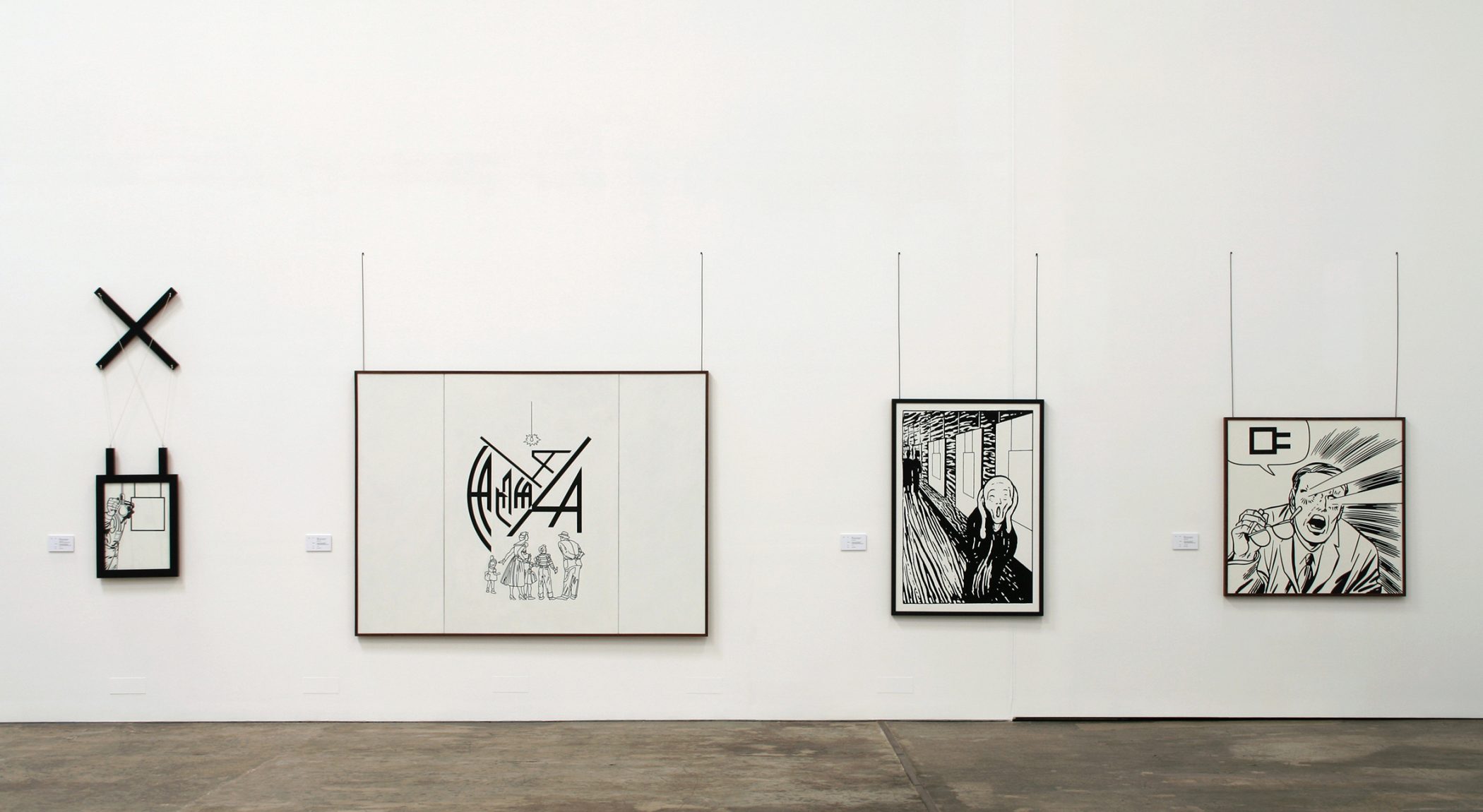Peter Tyndall
detail
21st November – 15th December 2012
Anna Schwartz Gallery Carriageworks
Amongst the liberating artistic impulses from the late 1960s to the mid-70s, Greenbergian formalism took hold in Melbourne – its most conspicuous manifestation was ‘The Field’ exhibition which coincided with the opening of the National Gallery of Victoria’s new site in 1968. Conceptualism, Minimalism and cross-disciplinary activity like (especially) feminist performance and music (including anti-music) represented a city which was activist and internationally aware. Nothing was timid, although much was exploratory and uncertain. Pictorial illusionism was consigned to history and the painters of homespun nationalism were in decline.
The notion that an idea in itself might become the well-spring for artists to make art was, for Australia, a radical concept. That’s when Peter Tyndall emerged as the least partisan or doctrinaire amongst coteries of determined intellectual bents, and he became one of the most admired of the new generation – our finest conceptual painter.
Greenberg argued that aesthetic analysis was intuitive, unable to be verified, where all that we were required to know was contained within the work of art itself; abstraction was the highest form of expression, and references to external subjects were superfluous. It was a tendency that Australian artists responded to. And Tyndall’s reaction? He became interested in the observer – the mind’s eye – looking at the observer observing; a speculative, intellectual enquiry where curiosity anticipates awe.
By the early 1980s Tyndall’s artistic proposition that the act of looking ‘would be the point of departure and return’ was conclusively in place. So too was his use of his now familiar ideogram, formed from the suspended rectangle which first appeared as small ‘painterly’ works (paintings within paintings) from the mid-seventies – a device that, in effect, can be seen as infinite, able to be repeated and serialised.
detail
A Person Looks At A Work Of Art/
someone looks at something…
LOGOS/HA HA
This suggests that Tyndall’s limitless use of the same title might describe two quite separate acts — but they are one. It’s a title that has remained unchanged almost from the beginning: where universal reason and truth, Logos, is adjoined by absurdity – laughter.
Tyndall is not a formulaic or didactic conceptualist – how could he be? when the viewer is inseparable from (intellectually or intuitively) completing a work of art. When looking, the dichotomy between the painting and the viewer lessens and, as the artist might say, he projects on what he sees and there becomes a toing and froing of reciprocal action. It’s an idiosyncratic dualism at play (partly from his interest in Buddhism), a connectedness through non-narrative form.
Tyndall is drawn to both the grandeur and simplicity of ideas and beliefs, often fascinated by what interests others, and their reaction to an image, perhaps an encounter and, in doing so, reveals that one concept is unable to remain as mutually exclusive from another. He can elevate the seemingly ordinary into images of unexpected coincidence. Think of them as meta-conceptions borne from associations, everyday observations – a text, found object – or the conduct of the religious and spiritual – life’s panorama.
I often think of Tyndall’s art as pictorial Haiku, where images or ideas are compressed into considered and prefigured arrangements – where nothing can be taken as literally given: like pictograms where the shape of language might represent a sound or an action, where a single image or a drawn arrangement becomes a summary of something. Tyndall’s stylistic antecedents are barely visible in his work, but the discreet indebtedness to Dada, Duchamp and the early avant-garde remains an enduring keystone. His formative years saw him involved with experimental music (Slave Guitars of the Art Cult); one-off projects and installations in non-mainstream venues; a time when communities of ideas flourished; it’s an attitude which remains as he quietly resists conformity.
I have known the artist for 40 years and first looked at his paintings through a western framework. Now I often approach them and, as the Japanese might encourage, think of logic as pliable, where seriousness, humour and the meaning found in a detail might be vast. I think too of the Mono-ha movement (School of Things) and one of its founding members, Lee Ufan, who said, “The highest level of expression is not to create something from nothing, but rather to nudge something which already exists so that the world shows up more vividly.”
Doug Hall, AM
Images
Peter Tyndall
detail, 2012
installation view, Anna Schwartz Gallery, Carriageworks
Curated by Doug Hall AM
Peter Tyndall
detail, 2012
installation view, Anna Schwartz Gallery, Carriageworks
Curated by Doug Hall AM
Peter Tyndall
detail, 2012
installation view, Anna Schwartz Gallery, Carriageworks
Curated by Doug Hall AM
Peter Tyndall
detail, 2012
installation view, Anna Schwartz Gallery, Carriageworks
Curated by Doug Hall AM

Peter Tyndall
detail, 2012
installation view, Anna Schwartz Gallery, Carriageworks
Curated by Doug Hall AM
Peter Tyndall
detail, 2012
installation view, Anna Schwartz Gallery, Carriageworks
Curated by Doug Hall AM
Peter Tyndall
detail, 2012
installation view, Anna Schwartz Gallery, Carriageworks
Curated by Doug Hall AM
Peter Tyndall
detail, 2012
installation view, Anna Schwartz Gallery, Carriageworks
Curated by Doug Hall AM
Peter Tyndall
detail, 2012
installation view, Anna Schwartz Gallery, Carriageworks
Curated by Doug Hall AM
Peter Tyndall
detail, 2012
installation view, Anna Schwartz Gallery, Carriageworks
Curated by Doug Hall AM
Peter Tyndall
detail, 2012
installation view, Anna Schwartz Gallery, Carriageworks
Curated by Doug Hall AM
Peter Tyndall
detail, 2012
installation view, Anna Schwartz Gallery, Carriageworks
Curated by Doug Hall AM
